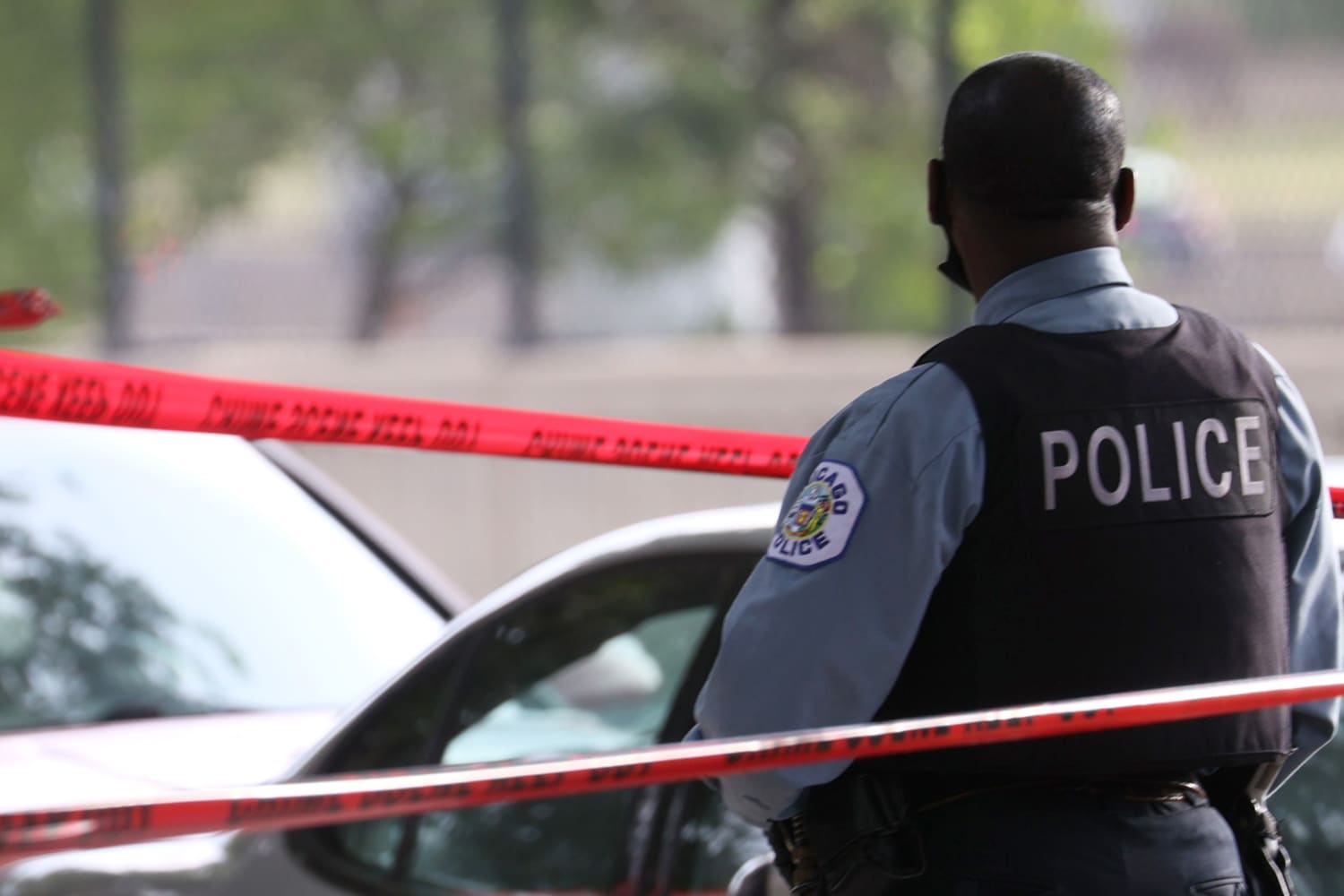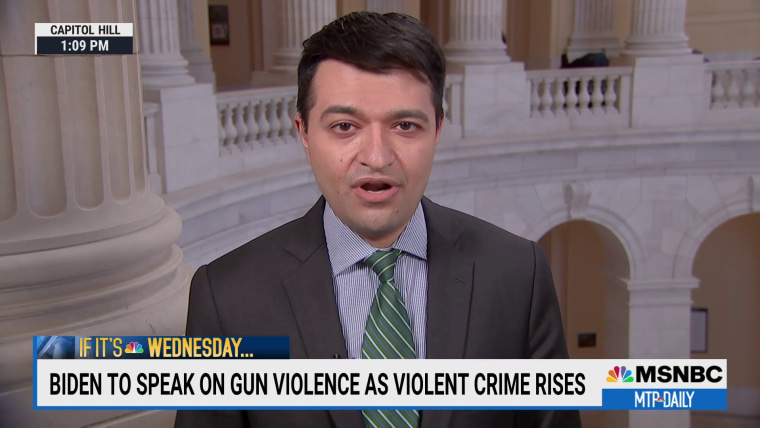WASHINGTON — After crime rates in the United States surged in the second half of the 20th century, moderate Democrats persuaded the party to toughen up its platform in the 1990s to channel widespread voter concerns spreading from big cities to the suburbs.
But today, as Republicans revive familiar warnings about out-of-control crime in pursuit of regaining power, the prominent moderate Democratic group Third Way has a different message for the party: Don’t take the bait; it’s a lie.
A new report by Third Way digs into the numbers and concludes: “Contrary to the media narrative, overall crime decreased in 2020 compared to 2019.”
The study shows that homicides went up last year, but found that category to be an outlier.
The paper explores crime rates in the 22 states and the District of Columbia, which submitted and published full data. They cover a broad mix from deep-red states like Nebraska and Tennessee to swing states like Wisconsin and Florida to liberal New York and D.C.
Nine of the jurisdictions have Republican governors and 14 have Democratic governors. The report finds “no difference in crime trends between Republican-led and Democrat-led states” from 2019 to 2020. Crime rose in some blue states and fell in some blue states; it rose in some red states and fell in some red states.
And the paper said there was no apparent disparity in crime trends between states that changed police laws and states that did not.
“There seems to be a hysteria that began about a year and half ago to try and convince Americans that we’re undergoing another crime wave,” said Jim Kessler, the executive vice presidency for policy at Third Way. “At a certain point, we just wanted to look at what the actual data was. And it doesn’t bear up.”
“What we’re seeing is really scant evidence of a crime wave,” he said.
There is no doubt that Americans are worried about crime. A Morning Consult poll in July found that 78 percent of voters say violent crime is a “major problem” in the U.S. and 73 percent believe it is increasing.
The GOP is seizing on the issue ahead of the 2022 midterm elections. On July 29, House Minority Leader Kevin McCarthy said that every time Americans “turn on the local or national news, they’re seeing crime continue to surge.” In a text message to supporters last month, he wrote, “The Democrats have a crime wave.”
President Joe Biden has connected recent violent crime to the Covid-19 pandemic and permissive gun laws. He has rejected the far-left slogan “defund the police,” which is widely dismissed by Democrats but backed by a small group of House members.
“People’s view of crime is going to be shaped by their own world that they live in, which feels safe, and then the wider world that they experience through television and media. And so on an issue like crime it’s pretty easy to manipulate people to say it’s really bad,” Kessler said.
From the 1960s to the early 1990s, he said, crime rates were rising across the board and “it was a top of mind issue without having to have Fox News make things up.”
Experts who study crime trends said that some of the Third Way findings, including an overall drop in crime, with the increase in homicides as an outlier, aligns with their own research.
While crime rates have been dropping for years, the uptick in homicides is a more recent phenomenon that got worse during the pandemic and after the police murder of George Floyd in May 2020, experts say. There are theories on why this happened, including the economic and emotional strain of Covid lockdowns, the interruption of programs aimed to help people at highest risk for gun violence, the reduction in police activity and a loss of public trust in police.
But researchers say it is not clear exactly how those factors affected crime.
Unlike Third Way, these experts have focused their research on cities rather than states, because crime is typically affected by local conditions, they say. Even so, they’ve found that the increase in homicides defies local politics, with the rate of killings up roughly the same in cities with Democratic leaders and with Republican leaders. The trend has been felt in big and small cities alike, and in rural areas as well.
“It’s an American problem, not a Democratic or Republican problem, and not just a big city problem,” said Jeff Asher, a crime analyst and co-founder of AH Datalytics.
He and other experts said it wasn’t as valuable to examine state-level data, where governors have less influence than mayors over crime policy.
“Crime control is a very local affair,” said John Pfaff, a criminologist at Fordham University School of Law.
The experts also questioned whether it was possible to determine how police reform policies affect crime trends because they can often take years to implement. Trying to do that to measure changes from 2019 to 2020 is particularly fraught because in many cities the homicide increase began before new reforms were implemented, they said.
“It’s going to be difficult to determine the impact of policing reforms on homicide rates,” said
Richard Rosenfeld, a criminologist at the University of Missouri-St. Louis. “Even reforms that took place before the increase in homicide, those reforms can be quite varied and one wouldn’t expect them to have an immediate impact.”
Kessler said he has followed right-wing media closely and accused it of “stoking a fiction of chaos and lawlessness throughout America” that is “not supported by the data.”
“We should be concerned about murders and do something about it,” he said. “But we should be honest about what’s happening with the rest of crimes.
“I worry about this issue for the midterms because I think that the right wing has gotten the jump on this. And has created a narrative out there that, judging by polls, most people believe,” said Kessler. “And one of the purposes of this paper was to provide some balance out there to say this is what’s happening, this is what’s going on.”
Source: | This article originally belongs to Nbcnews.com











